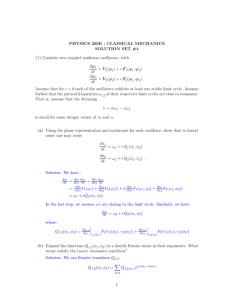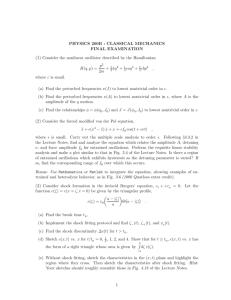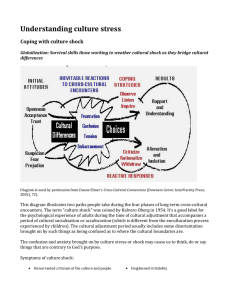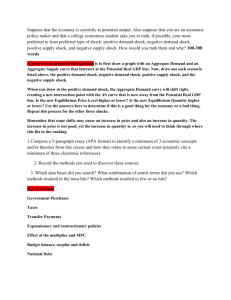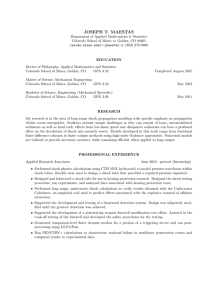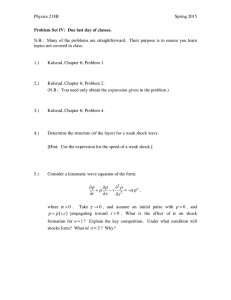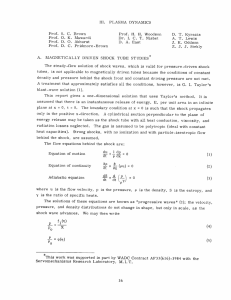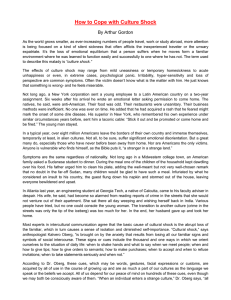(1)
advertisement
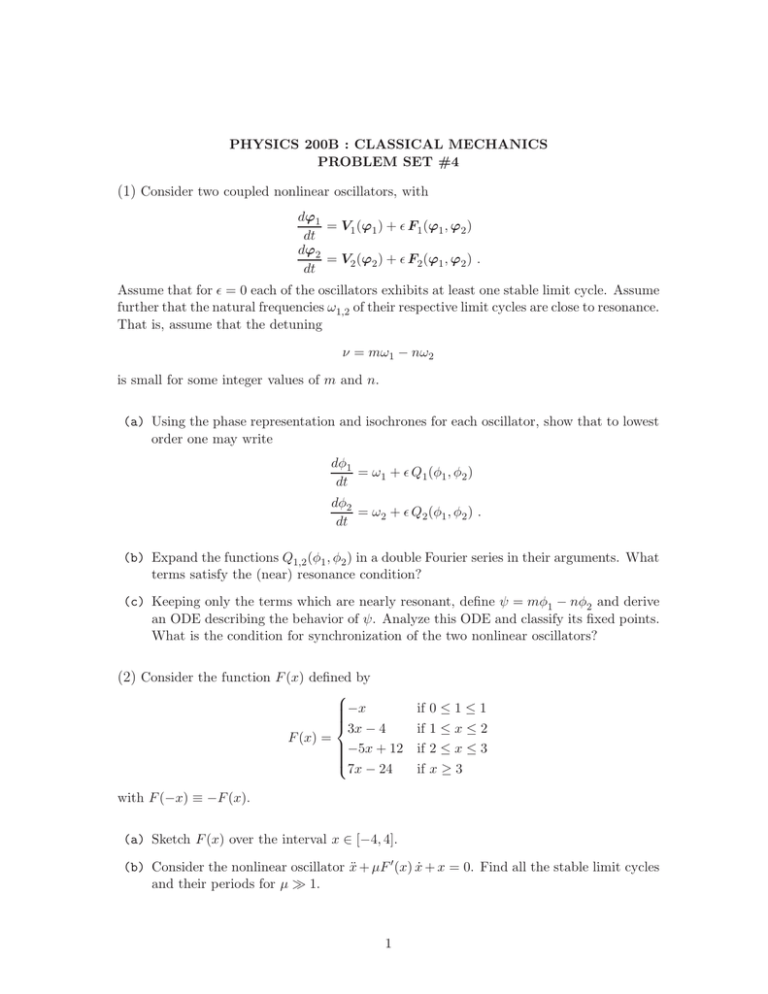
PHYSICS 200B : CLASSICAL MECHANICS PROBLEM SET #4 (1) Consider two coupled nonlinear oscillators, with dϕ1 = V1 (ϕ1 ) + ǫ F1 (ϕ1 , ϕ2 ) dt dϕ2 = V2 (ϕ2 ) + ǫ F2 (ϕ1 , ϕ2 ) . dt Assume that for ǫ = 0 each of the oscillators exhibits at least one stable limit cycle. Assume further that the natural frequencies ω1,2 of their respective limit cycles are close to resonance. That is, assume that the detuning ν = mω1 − nω2 is small for some integer values of m and n. (a) Using the phase representation and isochrones for each oscillator, show that to lowest order one may write dφ1 = ω1 + ǫ Q1 (φ1 , φ2 ) dt dφ2 = ω2 + ǫ Q2 (φ1 , φ2 ) . dt (b) Expand the functions Q1,2 (φ1 , φ2 ) in a double Fourier series in their arguments. What terms satisfy the (near) resonance condition? (c) Keeping only the terms which are nearly resonant, define ψ = mφ1 − nφ2 and derive an ODE describing the behavior of ψ. Analyze this ODE and classify its fixed points. What is the condition for synchronization of the two nonlinear oscillators? (2) Consider the function F (x) defined by with F (−x) ≡ −F (x). −x 3x − 4 F (x) = −5x + 12 7x − 24 if if if if 0≤1≤1 1≤x≤2 2≤x≤3 x≥3 (a) Sketch F (x) over the interval x ∈ [−4, 4]. (b) Consider the nonlinear oscillator ẍ + µF ′ (x) ẋ + x = 0. Find all the stable limit cycles and their periods for µ ≫ 1. 1 (3) Use the method of characteristics to solve the quasilinear PDE φt + γ xφx = −Bx2 φ , subject to the initial condition φ(x, 0) = f (x). (4) Consider shock formation in the equation ct + c cx = 0 with initial conditions c(ζ) = c(x = ζ, t = 0) an odd function of its argument, i.e. c(−ζ) = −c(ζ). Suppose further that c(ζ) is monotonically decreasing. (a) Find an expression for the time the wave first breaks, tB . (b) Show that ζ− = −ζ+ and find an equation relating ζ+ and t for t > tB . (c) Show that the position of the shock remains at xs (t) = 0 for all t > tB . (d) Find tB , ζ+ (t), and the shock discontinuity ∆c(t) for the case c(ζ) = − p c0 ζ . a2 + ζ 2 (e) Sketch the time evolution of c(x, t) with and without the shock fitting. (Without shock fitting, the function will eventually become multivalued.) (5) Consider shock formation in the equation ct + c cx = 0 with initial conditions c(x, t = 0) = c0 1 + x2 . (a) Find the position and time (xB , tB ) where the wave first breaks. (b) Find the two equations relating ζ+ , ζ− , and t. (c) For general t, your equations from part (b) cannot be solved analytically. However, 2 and as t → ∞, one can make progress. Show in the late time limit that ζ+ ∝ ζ− use the first shock fitting equation to obtain a relation between ζ+ and ζ− valid for c0 t ≫ 1. (d) Invoking the second shock equation, obtain expressions for ζ± (t) and c ζ± (t) . (e) Find the motion of the shock xs (t) at late times c0 t ≫ 1. Show that it agrees with the late time results derived in §4.5 of the Lecture Notes. 2

